The Israel Trail
A three-mile stretch of the Israel Trail (Segment 16, from Har Horshan to Jasser e-Zarka), passes through Ramat Hanadiv.
 News and Events
News and Events
A three-mile stretch of the Israel Trail (Segment 16, from Har Horshan to Jasser e-Zarka), passes through Ramat Hanadiv.
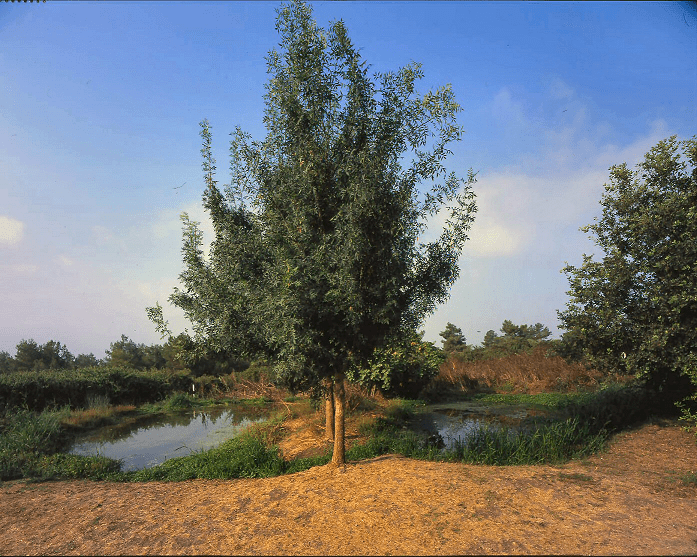
Emergency telephone for on-duty supervisor (after closing time): 053-6452336
Click here for the navigation app WishTrip
Highlights of the Trail:
The Pool
The pool was created here as an experiment to facilitate and encourage the growth of flora and fauna that live in moist habitats. Among the crowded clumps of water plants growing here is fool’s watercress (Apium nodiflorum), a relative of our cultivated celery. Today the pool and its damp surroundings are an important educational tool for Ramat Hanadiv’s Education Department.
The hike continues towards the ancient bath house.
The Bath House
Dating from the Roman period, the bath house was supplied with water from Ein Tzur, the nearby spring, enabling the residents of Umm el-‘Aleq (today Horvat ‘Aleq) to bathe in hot water. The structure is divided into four long consecutive rooms.
From the entrance, bathers walked down seven steps to the dressing room (apoditerium). In a corner of this room (frigidarium) was a plunge bath filled with cold water. After dipping themselves in it, bathers emerged into the middle room (tepiderium), then moved on to the hot bath or sauna (caldarium). Note the many short columns here; they supported the raised floor of this room. A heating installation next door generated warm air, which circulated into the space beneath the floor and heated the caldarium above it.The trail goes past the bath house and comes to the Ein Tzur water system, consisting of the spring, an aqueduct, a water tunnel and a constructed reservoir.
The trail goes past the bath house and comes to the Ein Tzur water system, consisting of the spring, an aqueduct, a water tunnel and a constructed reservoir.

Ein Tzur and the Water System
Three shafts, 11 metres apart, were hewn out of the bedrock of the long, dark Ein Tzur tunnel in order to illuminate and ventilate it and to facilitate maintenance of the water system. The tunnel takes a winding, 47-metre route along a natural fissure in the bedrock ‒ the source of the water. In the winter of 2001, flooding damaged the tunnel’s roof and the entrance to it was sealed off.
During the Roman period water accumulated in the tunnel, possibly for use as a ritual bath. To raise the water level and create a pool inside, the tunnel’s opening was blocked
The large reservoir at the end of the aqueduct supplied water to the bath house and fields as well as serving as the public bath. When Beit Khouri was established (c. 1880) on the remains of the archaeological site, the water from Ein Tzur was redirected to a new pool built of stone, west of the Roman pool
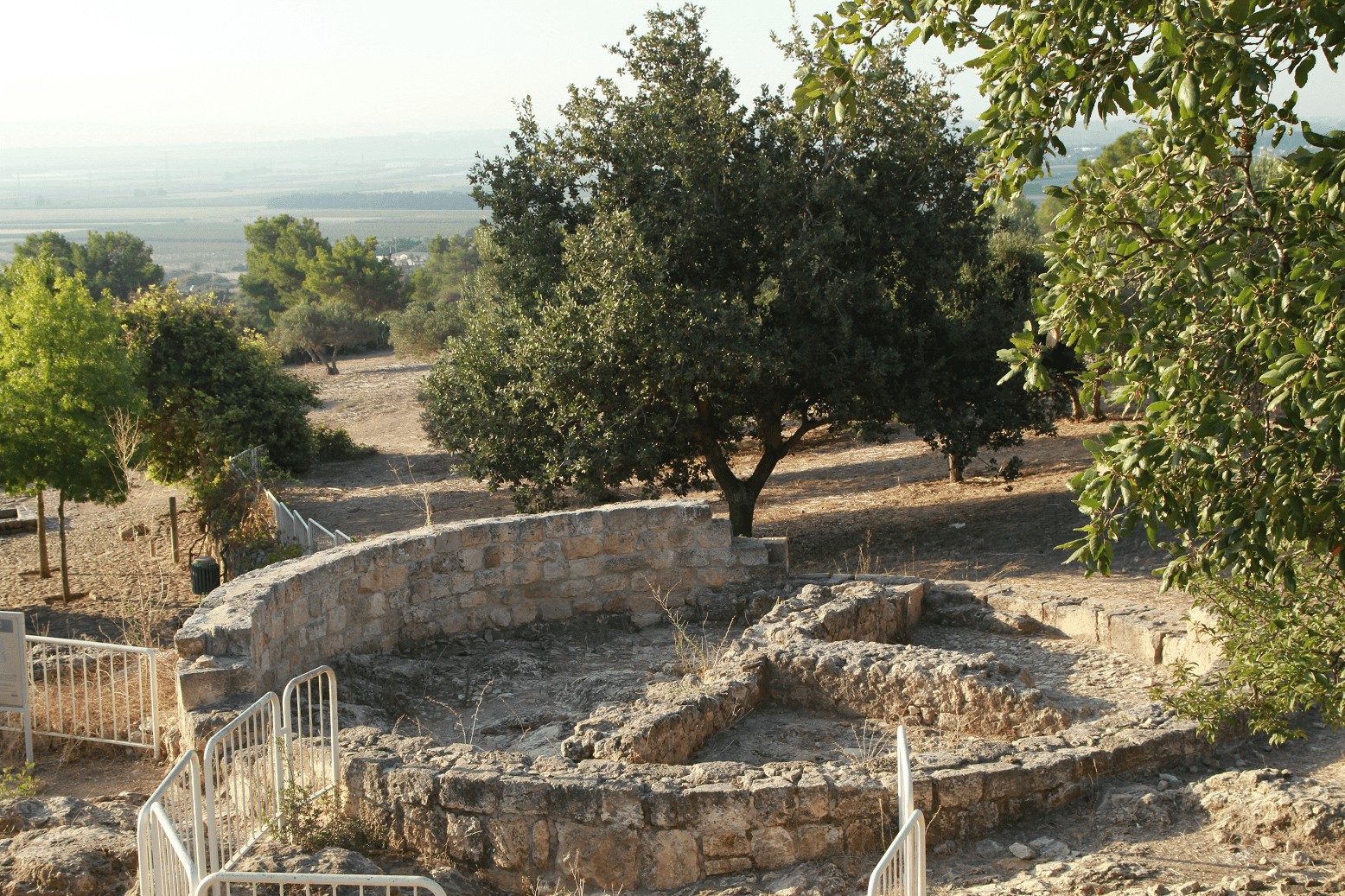
In 1939, a group of young Jews from the Betar youth movement founded a small ‘stockade and tower’ settlement on the hilltop east of the spring, naming it Tel Tzur Hahadasha (the New Tel Tzur). Near the Roman pool they built another one of concrete, and pumped the water from here to supply the settlement’s needs.
The Columbarium (Dovecote)
The dovecote is a round tower 18 metres tall. Its name tells its function: The Latin word columbarium means ‘dove’. According to a reconstruction of the original, the birds entered the tower via apertures in the upper part of the building and made their nests in cubbyholes fashioned for them along the inside walls of the tower and on two interior walls that stood next to each other. The many doves tended here had a multitude of uses: Their eggs and meat provided food; their excrement fertilized the fields; and the birds themselves were used for ritual purposes (Jewish or pagan).
The trail turns left and continues westward to the large archaeological complex
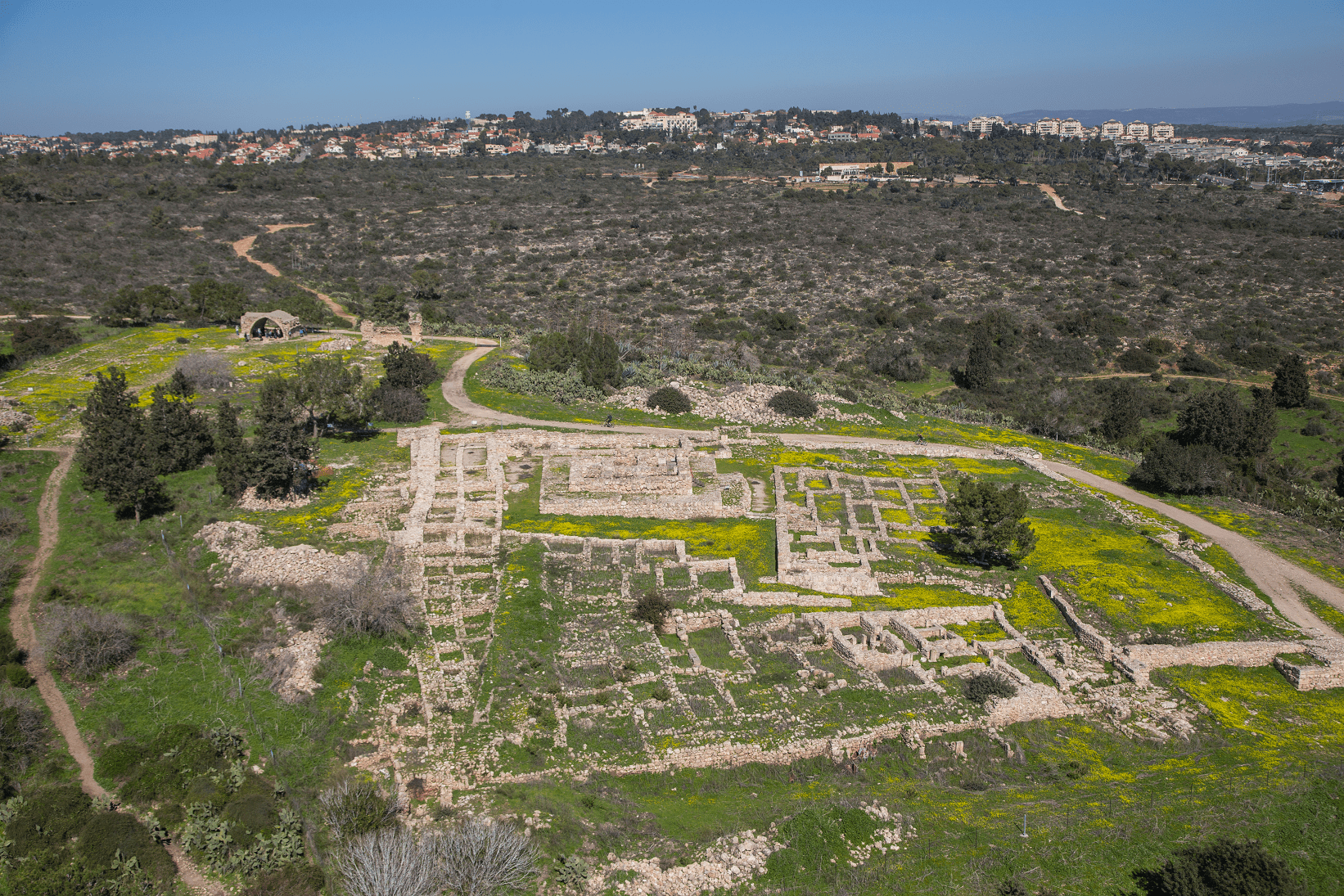
The Archaeological Complex
Located at a strategic point, in a fertile agricultural area with crucial water sources nearby, this area was first settled in pre-historic times more than 10,000 years agoArchaeological digs here have revealed a multi-layered site; their rich findings bear witness to the life styles of its inhabitants across the millenia. The site was populated throughout the Iron Age and the Persian, Hellenistic and Roman periods, up until the 2nd century CE. It has been reconstructed as it was at its peak, at the start of the Hellenistic period. Among the outstanding elements visible are the original stockade and watchtowers that surrounded the settlement. The place was reinhabited during the Ottoman era, when Umm el-‘Aleq was established.
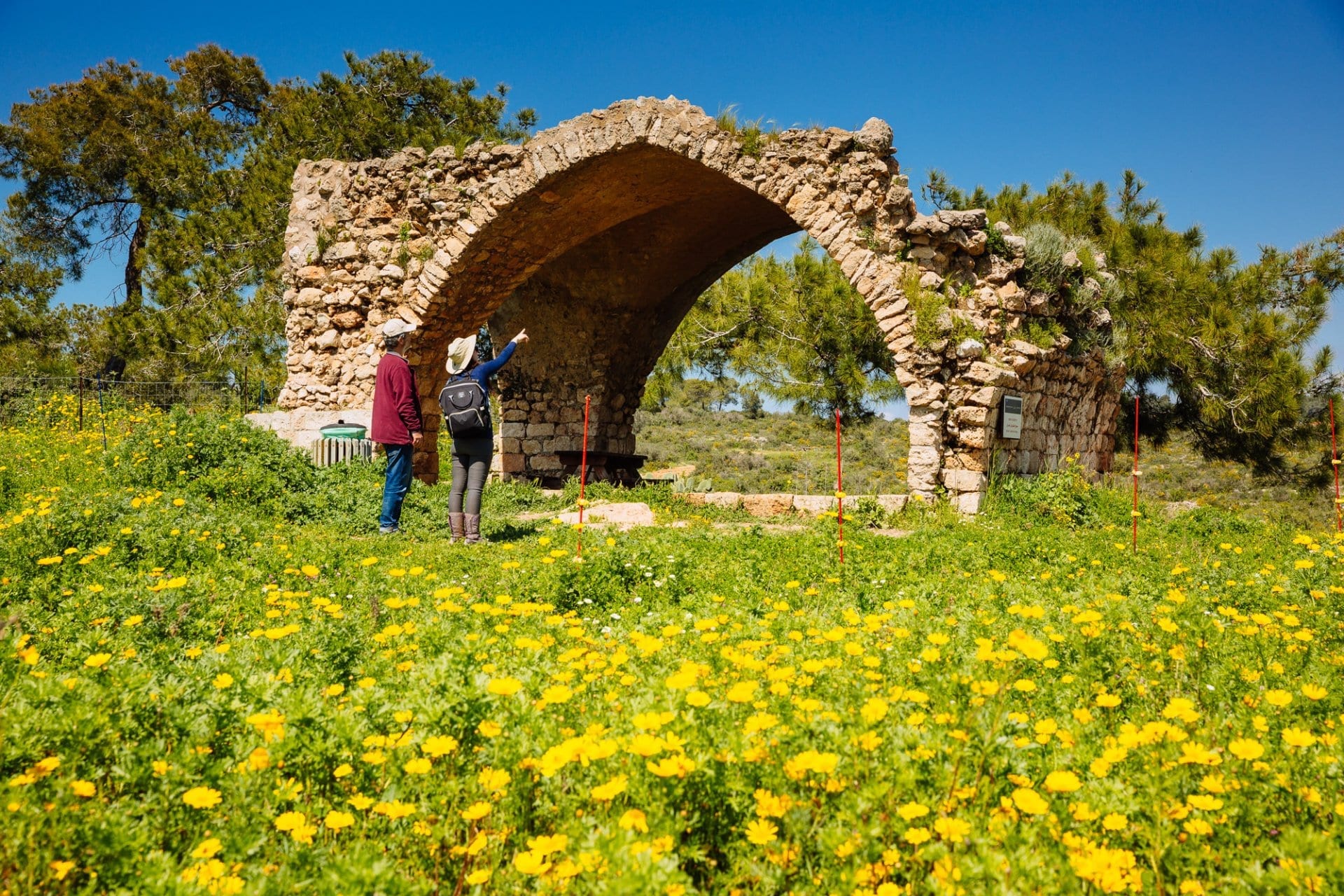
Beit Khouri
This building is the remnant of the large farmhouse built by the El-Khouri family around 1880. Constructed room by room, the house surrounds an internal courtyard. Most of the building stones used in its construction were taken from the ancient farmstead that once existed at Horvat ‘Aqav. Though the El-Khouris were Christian, they erected a mosque for their Moslem tenants (the large, conspicuous hall that stands at the south side of the manor house).
In 1913, the El-Khouri farm was purchased by the Jewish Colonisation Association (ICA) on behalf of Baron Edmond de Rothschild. Today the farm and the lands surrounding it comprise the grounds of Ramat Hanadiv. From 1919-23, three groups of Jewish pioneers came to the site intending to create a permanent settlement, but their efforts were defeated by disease and other disasters. The farm still holds a few reminders of their lives here, such as a charred brick oven in the kitchen, and a cast loor from 1920 in the former mosque, which served as the pioneers’ dining room.
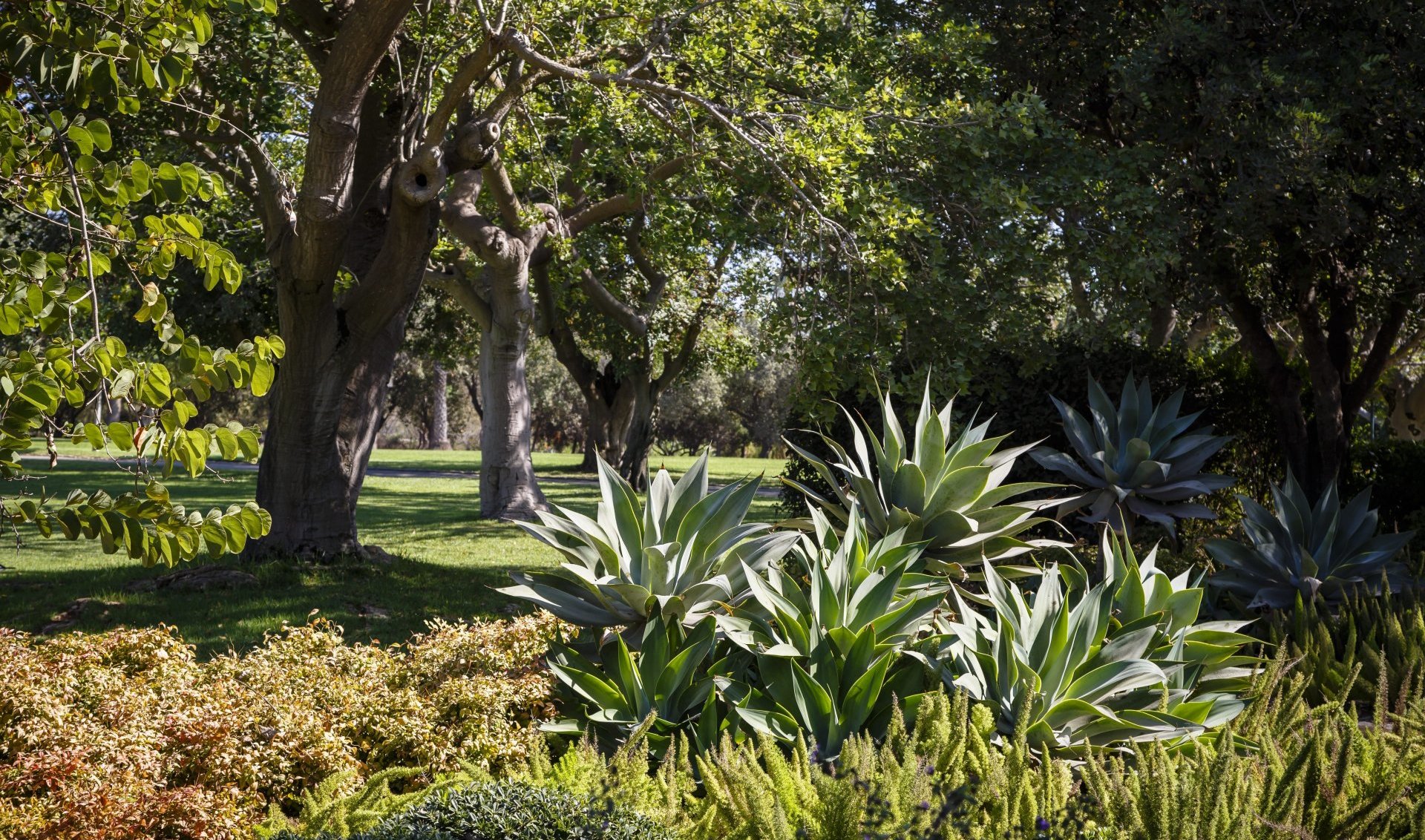
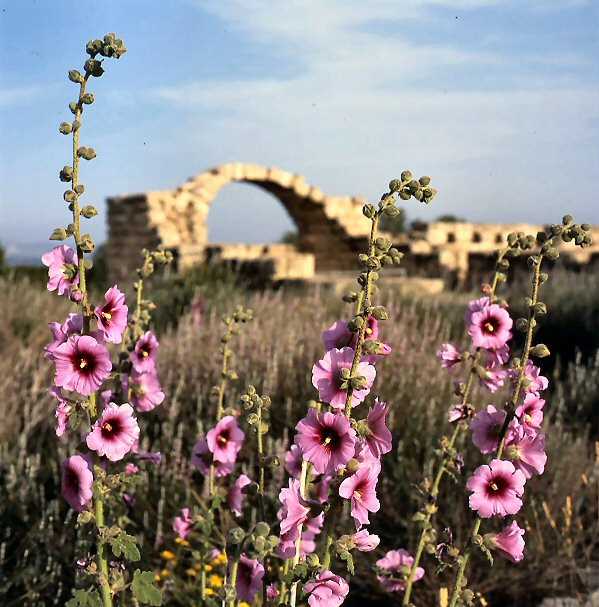
Most elements of the winepress were hewn out of the rock, except for the wide walls, parts of which were constructed and then apparently plastered over.
The pressing floor, carved out of the rock, was coated with a thick layer of white plaster; it slanted towards a pit where the raw grape juice was collected. The final squeezing of the grapes was carried out in the press utilising a board and weights, the method common in this region at the time.
Olive press
North (to the right) of the wine press stands a heavy round stone. This stone (called a memel in the Mishna) was part of the olive press. Here the olives were crushed into a mash from which the oil was extracted.
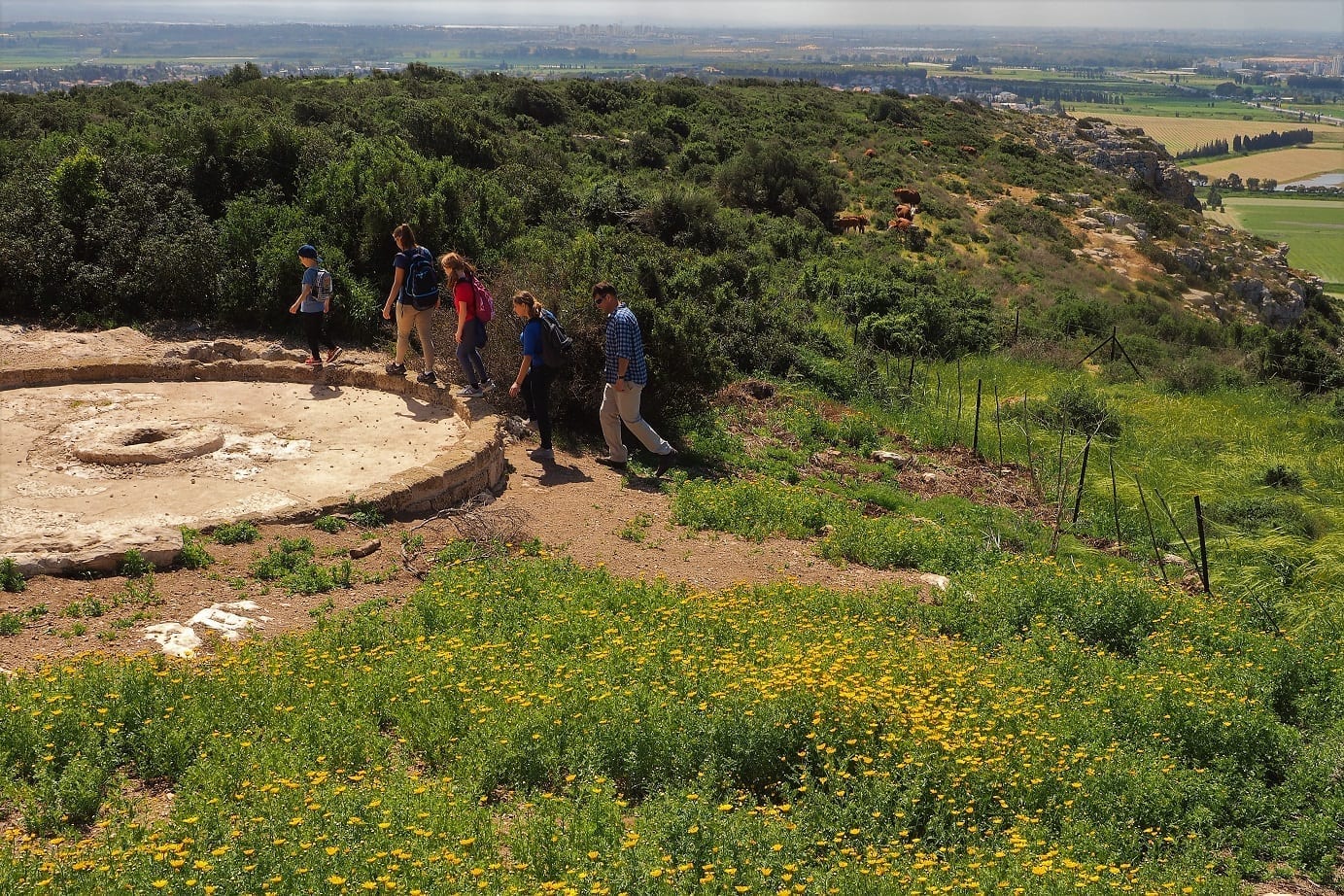
The Barn
During the threshing process, the sheaves of grain were beaten in threshing tools to separate the grains from the husks; afterwards the grains were winnowed from the chaff by tossing them into the air. The heavy grains fell down, while the lightweight chaff blew aside. The location of the threshing floor at the edge of the cliff, exposed to the west wind, made the work easier.
The sheaves of grain were brought to the barn from the wheat field, which apparently stretched across the large area east of the estate. The barn’s threshing floor is north of the olive press at the northwest corner of the Second Temple period complex.
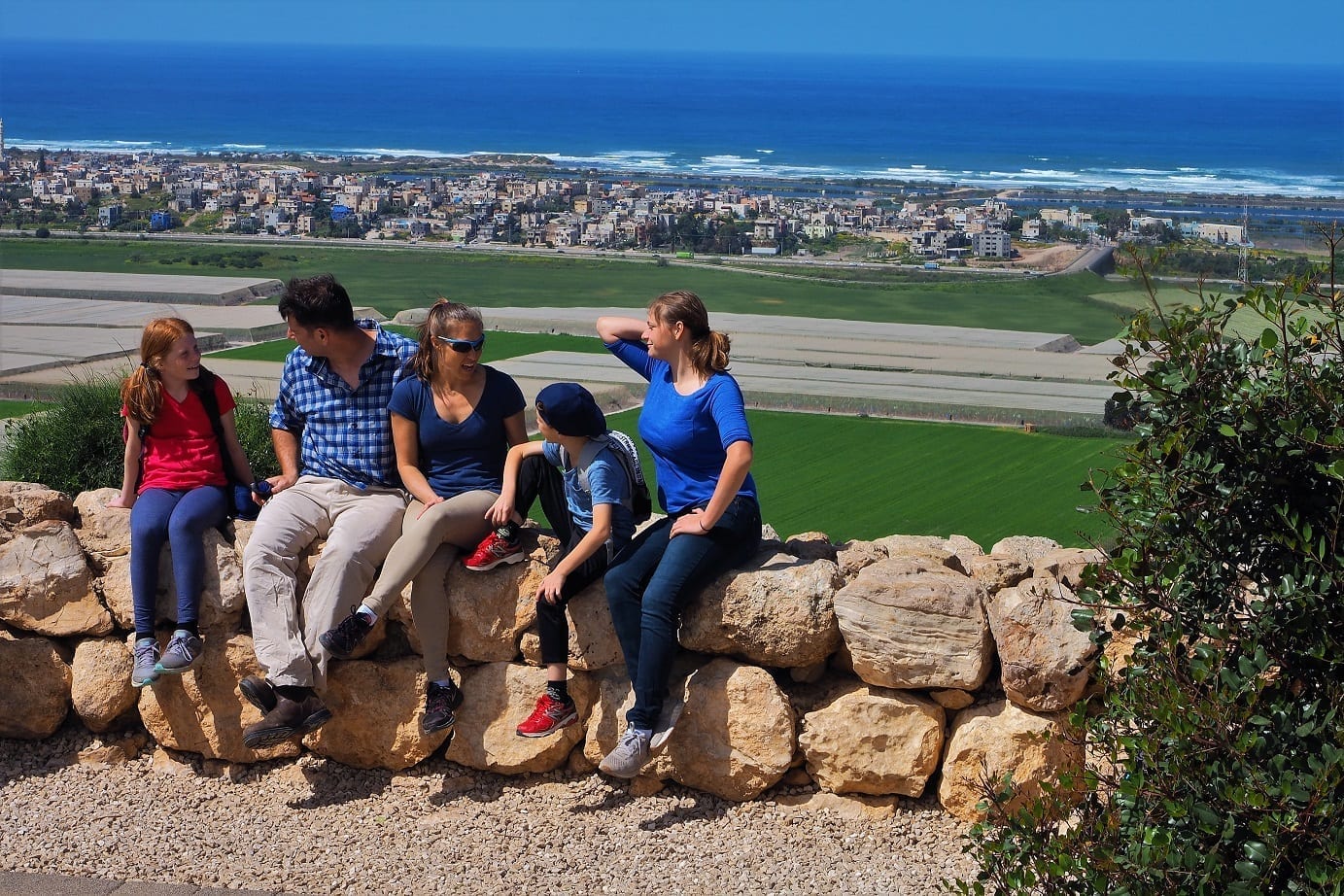
Observation Plaza
At the edges of the Ramat Hanadiv ridge unfurl the cultivated fields of the Carmel coastal plain. To the north is Kibbutz Ma’agan Michael; to the left of it, Jasser e-Zarka, Caesarea and Or Akiva. The sand dunes enveloping ancient Caesarea can be seen to the south; further along, the chimneys of the Orot Rabin power station pierce the sky. The hills of Samaria, Ramot Menashe and the Carmel range are to the east. Along the ridge, Keren Hacarmel (Mukhraka) stands out as the major landmark.Observation Plaza
At the edges of the Ramat Hanadiv ridge unfurl the cultivated fields of the Carmel coastal plain. To the north is Kibbutz Ma’agan Michael; to the left of it, Jasser e-Zarka, Caesarea and Or Akiva. The sand dunes enveloping ancient Caesarea can be seen to the south; further along, the chimneys of the Orot Rabin power station pierce the sky. The hills of Samaria, Ramot Menashe and the Carmel range are to the east. Along the ridge, Keren Hacarmel (Mukhraka) stands out as the major landmark.
 Nature Park Map Nature Park Map |
Any question? We will be glad to help
We have worked hard to make our buildings, infrastructure and service accessible to special sectors of the population so that everyone can enjoy an accessible and enjoyable visit to the Memorial Gardens and Nature Park.
Many trails traverse the Memorial Gardens. We recommend this route, but you can choose to walk another route
Refresh yourself at the Kiosk with a drink or snack. The kiosk is open daily.